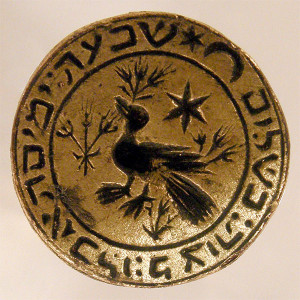Jewish Responses to Material Challenges
 Within the Christian majority of medieval Europe, diverse forces encouraged, limited, and opposed the presence of Jews. What was it that drove the Jews themselves to remain in older areas of Jewish settlement and to strike out dramatically into areas heretofore beyond the boundaries of late ancient and early medieval Jewish settlement? The answer is fairly simple. Jews became aware—as did many others—that Europe was in the midst of remarkable development, development that would move it rapidly to the forefront of the Western world. Jews sensitive to the opportunities associated with this remarkable development chose to remain in old areas of Jewish settlement in the south and to create new centers of Jewish life in the north. For these Jews, two related issues predominated—physical security and business success.
Within the Christian majority of medieval Europe, diverse forces encouraged, limited, and opposed the presence of Jews. What was it that drove the Jews themselves to remain in older areas of Jewish settlement and to strike out dramatically into areas heretofore beyond the boundaries of late ancient and early medieval Jewish settlement? The answer is fairly simple. Jews became aware—as did many others—that Europe was in the midst of remarkable development, development that would move it rapidly to the forefront of the Western world. Jews sensitive to the opportunities associated with this remarkable development chose to remain in old areas of Jewish settlement in the south and to create new centers of Jewish life in the north. For these Jews, two related issues predominated—physical security and business success.
As we have seen, the secular authorities of medieval western Christendom were largely responsible for assuring both Jewish physical security and Jewish business success. From the Jewish side, the key to ongoing governmental support lay, first of all, in economic achievement and contribution, and the Jews of medieval Europe showed considerable dexterity in perceiving and exploiting new economic opportunities. Especially noteworthy is Jewish awareness of the banking needs of medieval Europe from the twelfth century on. As the European economy accelerated, there was enhanced need for the movement of capital. At precisely this point in time, the Roman Catholic Church undertook a campaign to eliminate Christian usury, i.e. the taking (and indeed giving) of interest on loans by Christian from Christian. The combination of enhanced need for and religious obstacles against the flow of capital opened important economic opportunities area for the Jews. To be sure, money lending was (and is) hardly a popular economic activity, but its utility to the European economy is beyond dispute.
Alongside business success, a second key to Jewish survival and flourishing was the creation of effective agencies of Jewish self-rule, which could intercede regularly with the non-Jewish leadership of both state and church to secure maximum support. Beyond this “foreign relations” function of the Jewish community structure, it was also responsible for supplying all the requisite needs of internal Jewish life—social services, education, and the necessary religious institutions. In the face of unrelenting Christian missionizing pressure—informal and formal, the Jewish communal apparatus also had to provide a warm and supportive ambience that would reinforce Jewish identity. The successes of the Jewish community structures in achieving these multiple objectives was considerable



